Ahhh, Christmas … Time for old chums to get together, share memories, slap backs, redistribute blame and generally relive their glory days. For this lot, those days were spent designing, building, redesigning and amending the Millennium Bridge. So here’s your chance to eavesdrop on Arup, Foster and Partners, Sir Robert McAlpine and chums as they discover the pleasures of www.projectsreunited.co.uk. Your turn next?
A shaky start
Hungry and cold, the Millennium Bridge team have been gathered for half-an-hour at the bridge they built just a few years before. They had been promised food and booze, but Bohdan Cap, Building’s photographer is running late. “Shall we just go to the pub?” says one of the rabble. There’s a gentle laugh, but he’s not really joking.
The 13 attendees include members of the design team from Foster and Partners, the contractor Sir Robert McAlpine and consultant project manager Malcolm Reading & Associates. But most worked at Arup. Several have moved on, such as Chris Wise, who went off to work on 50-storey towers at Expedition Engineering, and they’re clearly delighted to be reunited.
For example, Ellis Walker, who has since moved to rival WSP, is mocked by Martin Self, who is still at Arup, for proposing to his wife on the bridge. Not that Self has any justification for ribbing others, as he could easily be confused for a scruffy, cardigan-wearing student. This image isn’t helped by the fact that he now works in Arup’s advanced geometry department.
Building hopes that the banter will keep the group smiling for the “two minutes” that Cap now claims by phone it will take him to reach the shoot. Fifteen minutes later, he arrives. “I thought you meant the other bridge.” Eh? “You know, London Bridge.”
Unsurprisingly, the group look rather unimpressed at the snapper’s protestations: the first London Bridge was built in 1176; the design competition for the Millennium Bridge was launched in 1996. But then, this team has had to endure far worse slights than having their work mistaken for a bridge that was conceived nearly 1000 years previously. After all, this feat of engineering is still commonly known as “the wobbly bridge”. “If the team hadn’t been so closely knit, we would have struggled to get through it,” reminisces one of the project architects Catherine Ramsden, as the party finally wanders towards the bar for lunch. “But nobody ever lost their faith.”
1 Martin Self
What did you do? I worked on the aerodynamic design of the bridge for Arup. Then I did the damping scheme, which got rid of the wobble. I’m still at Arup in the advanced geometry unit.
Age 31
How do you remember it? I remember being in the site hut looking at the results when we tested the bridge before reopening with 2000 people walking across it. Just seeing it built from the beginning was amazing.
2 Chris Wise
What did you do? I was the director at Arup responsible for the engineering side of the design competition, but I left in mid-1999 to co-found Expedition Engineering, which is now 30-strong.
Age 48
What do you remember? The design of the piers was generated by physics. I stood with my arms and legs apart, as if I was using my body to feel the forces of the bridge – those angles were exactly as they were built.
3 Ellis Walker
What was your role on the bridge? I was an engineer, working on the core beam. I recently moved to WSP, where I’m an associate.
Age 31
How do you remember it? I was supposed to be in Brazil shortly after it first opened, but I postponed the holiday because of the wobble. I didn’t go until after the problem was fixed. By the end of the day that it reopened,
it got so busy that we were doing crowd control.
4 Catherine Ramsden
What did you do? I was Foster and Partners’ “job captain”, and I’m now an associate partner
Age 39
What do you remember? We had a renewed energy to fix the problem but we learned a harsh lesson about celebrating success too early.
The wobbles
The party starts eating and drinking and people start opening up about their memories of that fateful day: 12 June 2000. The Millennium Bridge was closed down, having been open for just two days.
The team had been so ecstatic – with 100,000 visitors on its first day, the bridge had initially been a spectacular success. Unfortunately, it was perhaps too successful, as the huge surge in human traffic made the bridge wobble. Here are some examples of how the team remembers the day the bridge got the shakes:
The bridge wobbled on the opening day when there was a march of children across it. I was standing with [client] David Bell, and he asked if this was supposed to happen. I didn’t grasp the implications until the next day.
Malcolm Reading, Malcolm Reading & Associates
I was pretty gutted. It’s a shame it’s got the “wobbly bridge” name now.
Tom Barton, Sir Robert McAlpine
It was pretty traumatic as you don’t expect things like that to go wrong.
Pat Dallard, Arup
As the engineer, Arup was bound to get the blame. Chairman Bob Emmerson moved hell and high water to get anyone in the Arup world who could possibly help on to the project. He ended up with about 25 people broken into three teams to resolve the crisis. One team would research all the available literature on the phenomenon, another would test solution at three universities and the last would draw up a solution.
Arup had total control until it handed back to the client, which project manager Jill Baker found was particularly satisfying as it gave her complete freedom to negotiate and implement the contracts for dampers and steelwork that were so vital to solving the problem.
5 Jill Baker
What did you do? I was project manager for Arup during the modification phase.
Age 42
How do you remember it? I was new to Arup when the wobbling happened, so I was just curious really. It was fantastic when it reopened though, seeing the public walking over it early in the morning.
6 Bob Emmerson
What was your role on the bridge? I was chairman of Arup at the time and now I am a consultant to the group working on Terminal 5
Age 67
What do you remember? I remember Tony Fitzpatrick, who at the time was in charge of the project for Arup, phoning me on the day it wobbled. The sharpest memory, though, is those 2000 volunteers testing the bridge by standing on it before it reopened. It was a relief.
The happy ending
As the guests begin to leave, talk moves on to the reopening of the bridge. Over the course of 20 months, £5m was spent on dampers and what are essentially shock absorbers to stop the 4 m wide walkway from wobbling again.
Once everything was in place, there was a secret test involving hundreds of Arup employees to make sure it no longer wobbled. There wasn’t the merest quiver. The team knew it would be fine for the public test of 2000 people, but still there was relief when nobody went overboard. Finally, on 22 February 2002, the damn thing reopened and the engineers and architects found themselves splashed all over the front pages of the broadsheet press.
As ever, it was the architect that took most of the glory whereas the engineer had been criticised and forced to find the solution. Ken Shuttleworth, Lord Foster’s then right-hand man, found himself quoted on the front page of The Guardian and Foster grabbed the headlines by promising to jump off the bridge if it wobbled again.
It was a great day, but for some it was more important than others. Sophie Le Bourva, lead engineer on the Millennium Bridge, explains the relief she felt after four-and-a-half years on the project. She puts the success of the reopening down to Arup having “the classic engineer’s response: what is happening? How do you resolve that?”
Le Bourva is one of the four guests who remain, along with Walker, Self and Baker. They decide to celebrate their reunion by pulling a couple of crackers. It’s nearly Christmas, after all, and there’s a lot to celebrate. It has just been announced that the bridge will be featured in next year’s London Architecture Biennale.
Also, the window of this bar overlooks the bridge, so the remaining partygoers can spy the hundreds of eager workers making the crossing from the City to the south bank of the Thames, and vice versa. Dozens of smiling families and camera-happy tourists also make the journey – albeit more slowly – over the river. But while the visitors meander, the bridge is solid as a granite outcrop.
7 Sophie Le Bourva
What did you do? I was the lead engineer and project manager for Arup. I’m currently working for the company on the Pompidou Centre.
Age 41
How do you remember it? I remember that it took a long time to install the dampers – about one year – so we were sure that the bridge was going to work second time around. We formed really close relationships and friendships.
Left to right on the bridge....

Malcolm Reading
Malcolm was consultant project manager. He loves the bridge – “even the wobbly parts”
Roger Ridsdill-Smith
The pre-wobble project manager. His fault? Maybe, but then he led the fixing
Chris Wise
Or is smooth Chris to blame? He did the engineering side of the design competition
John Seaman
He led the foundation design team. The bridge was his last hurrah in civil engineering
Catherine Ramsden
Catherine was an associate at Foster. She had the project’s coolest title: “job captain”
Sophie Le Bourva
Lead engineer. French – so it was les grenouilles who made it wobble
Jill Baker
A bit of a heroine – Jill negotiated the contracts that stopped it wobbling
Martin Self
He was the mathematics wiz who worked on the aerodynamic design
Ellis Walker
A project engineer. Martin’s mate, but much smarter dressed
Bob Emmerson
Was Arup’s chairman at the time. Now trying to prevent Terminal 5 gyrating
Andy Bow
Foster’s project director. Prone to understatement – wobble was “a bit disappointing”
Pat Dallard
Led the research to get rid of the wobble. Marathon personal best: 3hrs 37mins
Tom Barton
The contractor. Rates the bridge as one of his top five projects after 30 years in the game
To absent friends
Unfortunately, there were two people who worked on the bridge who could not join the party:
Tony Fitzpatrick, Arup’s project director, and Bill Lowther, Sir Robert McAlpine’s project manager, both passed away in the years since it opened.
Fitzpatrick took over from Chris Wise after he left Arup in 1999. He was the driving force behind the fixing of the bridge. Emmerson remembers him cooking up a feast at his house during a crisis meeting. Fitzpatrick got the barbecue going and their families drank Italian wine together as they worked to rid the bridge of its wobble. And it was in Fitzpatrick’s home that they decided a programme for action. In July 2003, Fitzpatrick took over Arup’s Americas division and owned an apartment overlooking another great bridge, the Golden Gate. He had a passion for bikes and owned at least five.
It was on one of these that he died in an accident.
Lowther died shortly after the bridge reopened. He is known to have considered it to be one of his finest achievements. His then boss Tom Barton says: “He was very, very proud of it.” His name is inscribed on the bridge in his honour. His widow organised a bike ride shortly after his death for a leukaemia charity. She made sure that the photographers got pictures of the riders crossing the Millennium Bridge.
Now it’s your turn …
Joining Projects Reunited is simple, whether you’re a subscriber or not. Go to www.building.co.uk and click on the “Projects Reunited” thumbnail. This takes you directly to the site where you will be able to browse through the projects and names that have joined up. There’s an option for you to add your name and comments to any of the projects. If your favourite project isn’t there, there’s an option for you to add it to our list. Your name and project will be on the website within a few days. It’s that easy!
The Millennium Bridge is not the only project on the website: log on to catch up with former colleagues from:
The guests from this party that have not had their details published here can be found on the Projects Reunited site




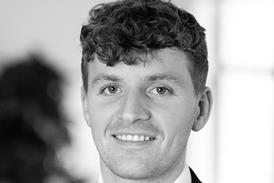
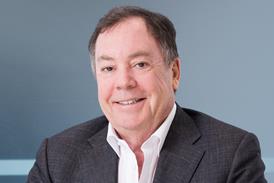





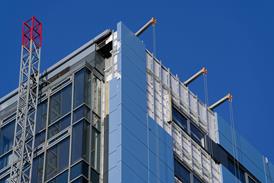


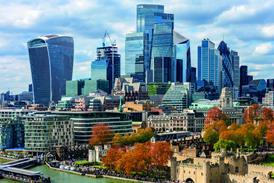

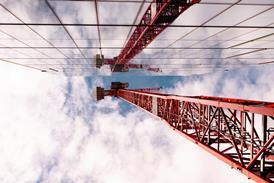






No comments yet